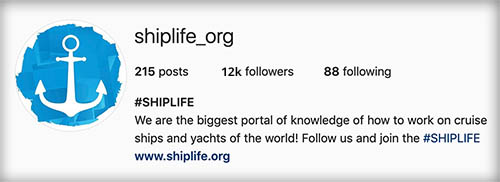Conglomerates
They are a combination of multiple business entities operating in entirely different markets under one corporate group, usually involving a parent company and many subsidiaries, and are very common within the cruise industry. We can divide cruise conglomerates into four groups, each with their own pros and cons and of course, their own set of rules that affect direct and indirectly all their crew members. Another common feature of conglomerates is the mention of a “blacklist”, a term very common between crew members that we explained in our Slang and Terms article, in which a crew member that was dismissed from a company isn’t allowed to apply for another company of the same group as they belong to the same conglomerate.
We separated the conglomerates by the largest in revenue and annual passenger percentages, using the actual and updated data from different official sources. If you do believe any information seems to be wrong, please contact us.
1- Carnival Corporation
Carnival Corporation was founded as Carnival Cruise Line in 1972. The company grew steadily throughout the 1970s and 1980s, making an initial public offering on the New York Stock Exchange in 1987, and with the capital that was generated, it was used to finance their future acquisitions. Between 1989 and 2003, the company acquired Holland America Line, Windstar Cruises, Westours, Seabourn Cruise Line, Costa Crociere, Cunard Line, P&O, P&O Australia, AIDA and Princess Cruises. The name Carnival Corporation was adopted in 1993, to distinguish the parent company from its flagship cruise line subsidiary.
They hold the titles of the biggest fleet, largest capacity of passengers, most favorite brands, most revenue and most passengers cruise annually since 2003, even not being the ones with the largest ships.
PASSENGERS ANNUALLY
NUMBER OF SHIPS
CURRENT FLEET:
- Carnival Cruise Line
- Princess Cruises
- Holland America Line
- Cunard Line
- P&O
- P&O Australia
- AIDA
- Costa Crociere
- Seabourn
2- Royal Caribbean Group
Royal Caribbean Group, formerly known as Royal Caribbean Cruises, is the world’s second-largest cruise line operator, with half of the size of Carnival Corporation. As of March 2021, Royal Caribbean Group fully owns three cruise lines: Royal Caribbean International, Celebrity Cruises, and Silversea Cruises, while holding 50% of shares of the TUI group, that consists of TUI Cruises, Marella Cruises and Hapag-Lloyd Cruises. In 2020, Pullmantur declared bankruptcy and was removed from the group, with remaining ships being scrapped, and in 2021 the Azamara brand was sold to a Chinese company.
As of 2023, the Royal Caribbean Group has five of the biggest cruise ships in the world, with four more under construction.
PASSENGERS ANNUALLY
NUMBER OF SHIPS
CURRENT FLEET:
3- Norwegian Cruise Line Holdings
Norwegian Cruise Line Holdings (NCLH) is the third-largest cruise operator in the world and was formed in 2011, while its main subsidiary, Norwegian Cruise Line, was still part of the Genting Hong Kong group. After many years raising their capital and shares, on December 2018 Genting sold off their remaining stakes in the company, marking the end of a relationship that lasted more than a decade and allowing the purchase of Prestige Cruise Holdings, the parent company of Oceania Cruises and Regent Seven Seas Cruises, to finally form what we know today as NCLH.
PASSENGERS ANNUALLY
NUMBER OF SHIPS
CURRENT FLEET:
- Norwegian Cruise Line
- Regent Seven Seas
- Oceania Cruises
Liked this article? Well, so like our page on Facebook as well! You can also follow us on Instagram and access our YouTube channel by clicking on the links below:
 Tagalog
Tagalog
 English
English  Español
Español  Português
Português 

